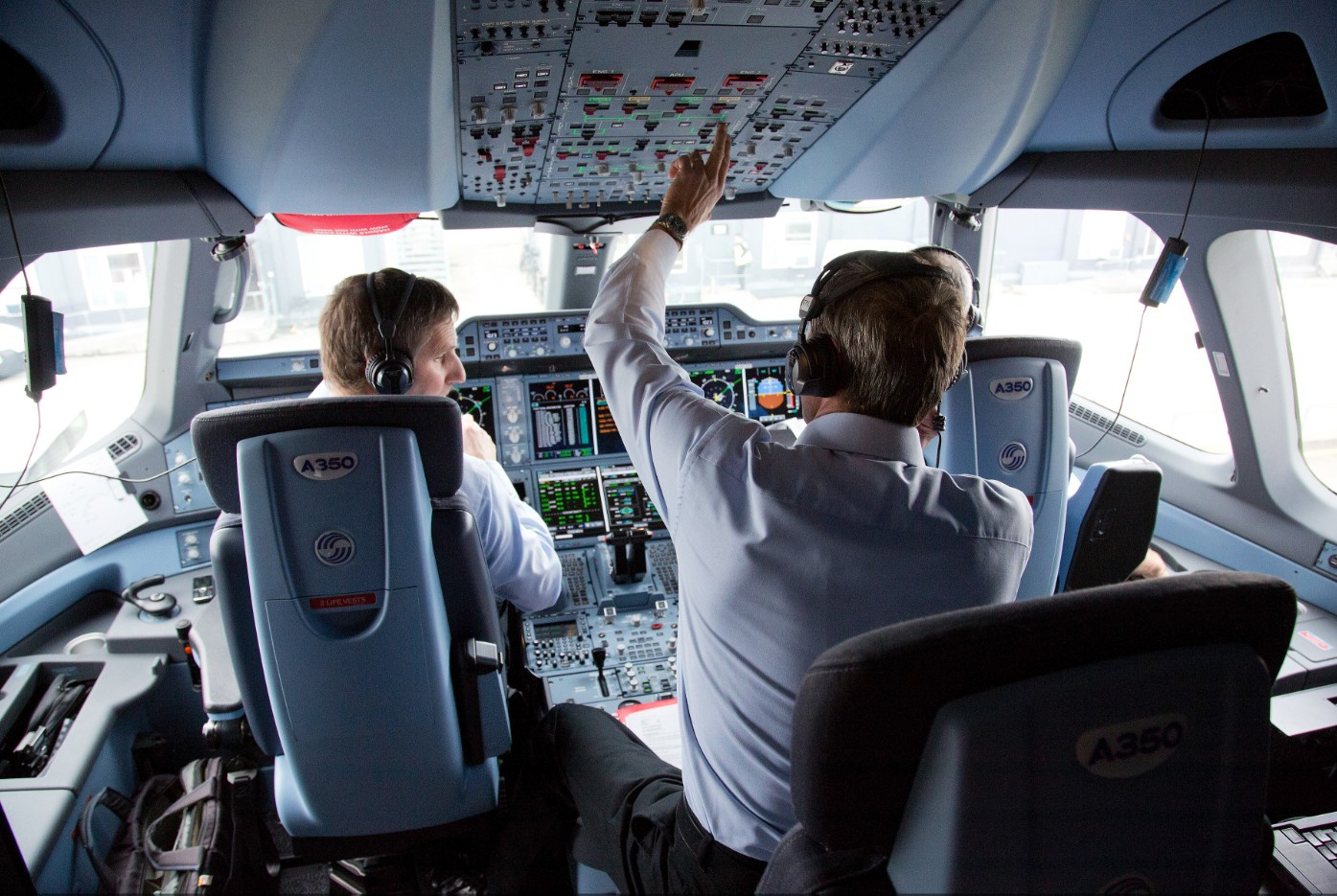54% of passengers will refuse to fly an airplane without a person at the helm

Airbus A350 airliner cabin
The autopilot is an integral part of the modern aircraft. Passenger airliners of the last generation are largely automated. Many of them are able to carry out not just maintaining the course, but even landing in automatic mode, and in fact landing is perhaps the most difficult part of the flight. But these machines perform on autopilot all the elements of landing : planning, leveling at a height below 10 m, then maintaining to pay off the vertical speed and the last stage - parachuting with subsequent landing. Then the autopilot moves, tracking the center line of the runway, applies the brakes and raises ground interceptors (spoilers). In general, a person can only control the process.
In many cases, almost the entire flight takes place on the "machine" with the partial participation of the pilots. But if the pilots just got up and left the cabin - probably, panic would start in the cabin. Many people are not psychologically ready for this, they are not aware that they are almost always flying on autopilot. A UBS study found that 54% of passengers would refuse to fly in a fully automated aircraft.
According to John Cox, the former captain of US Airways and founder of Aviation Safety, Safety Operating Systems, a consulting company, autopilots have very few restrictions left. So, they cannot use reverse thrust and cannot turn off the runway if necessary.
In addition, significant human involvement is required to set up the autopilot before landing. The commander of the airship establishes the correct modes of operation of the systems - and only then, if necessary, the autopilot is activated. That is, one cannot say that flights are fully automated, but such a flight cannot be called completely manual.
John Cox says that automatic landing is more effective in some conditions, and less effective in others. For example, during fog and poor visibility, the pilot will almost certainly transfer control to the autopilot, since in these conditions it is much more efficient. On the other hand, with gusting side wind, manual piloting is more preferable: it is better to go both to the landing area and to the landing itself. In addition, it is very important that the pilots maintain their shape, do not lose their abilities. And a periodic manual landing helps to achieve this.
Pilots train landing on autopilot during each training session. They are already accustomed to the work of automatic systems and are not at all worried when they transfer control to a computer.
Unfortunately, the same can not be said about the passengers. The aforementioned survey of the investment bank UBS was conducted among 8,000 passengers, of which more than half expressed their unwillingness to fly on a fully automatic flight. Although the analysis of financiers shows that the transition to full automation would save considerable money for airlines and passengers themselves. According to estimates of UBS, the savings can reach $ 35 billion per year. The main item of savings is the salaries of highly qualified personnel (that is, pilots). Here, companies can save $ 31 billion. To this is added savings in training ($ 3 billion) and fuel ($ 1 billion), since automatic systems control the aircraft in a more optimal and economical mode.
Reducing airline costs will also lead to lower ticket prices, which will be beneficial for passengers. According to the analysis of UBS, on American flights, tickets should be cheaper by about 10%, and the airlines' profits will double.
But even saving on tickets is unlikely to convince people that it is safe to get on a plane without a person at the helm. In some ways, they are right, because the possibilities of the autopilot are not really limitless, and in some situations it is not possible to avoid human participation, as John Cox said above. However, investment bank analysts believe that these sentiments will change in the future, as autopilot capabilities will grow. By the middle of the century, according to UBS, most passengers will already agree to get on a fully automatic aircraft.
Now almost all the largest manufacturers of passenger aircraft are testing fully automatic liners, writes Fortune . In June, Boeing reported that it was testing systems in simulators so far - and it is already clear that AI can replace a person in terms of tasks. And in July, Airbus tested the Sagitta unmanned aircraft. The plane made a successful seven-minute flight at the programmed course.

Test flight of an unmanned aircraft Sagitta Airbus company
True, this particular model will not be used in passenger aircraft. The Airbus Defense and Space division develops it under the military order. The test drone on a scale of 1: 4 has dimensions of 3 × 3 meters, that is, the final version of the UAV will be 12 meters. The model is accelerated by two "turbines" of 300 newtons, the maximum take-off weight of 150 kg. The body is made entirely of carbon fiber composite (CFC).
It seems that the army before the airline, will begin to use drones the size of a passenger plane.
All Articles